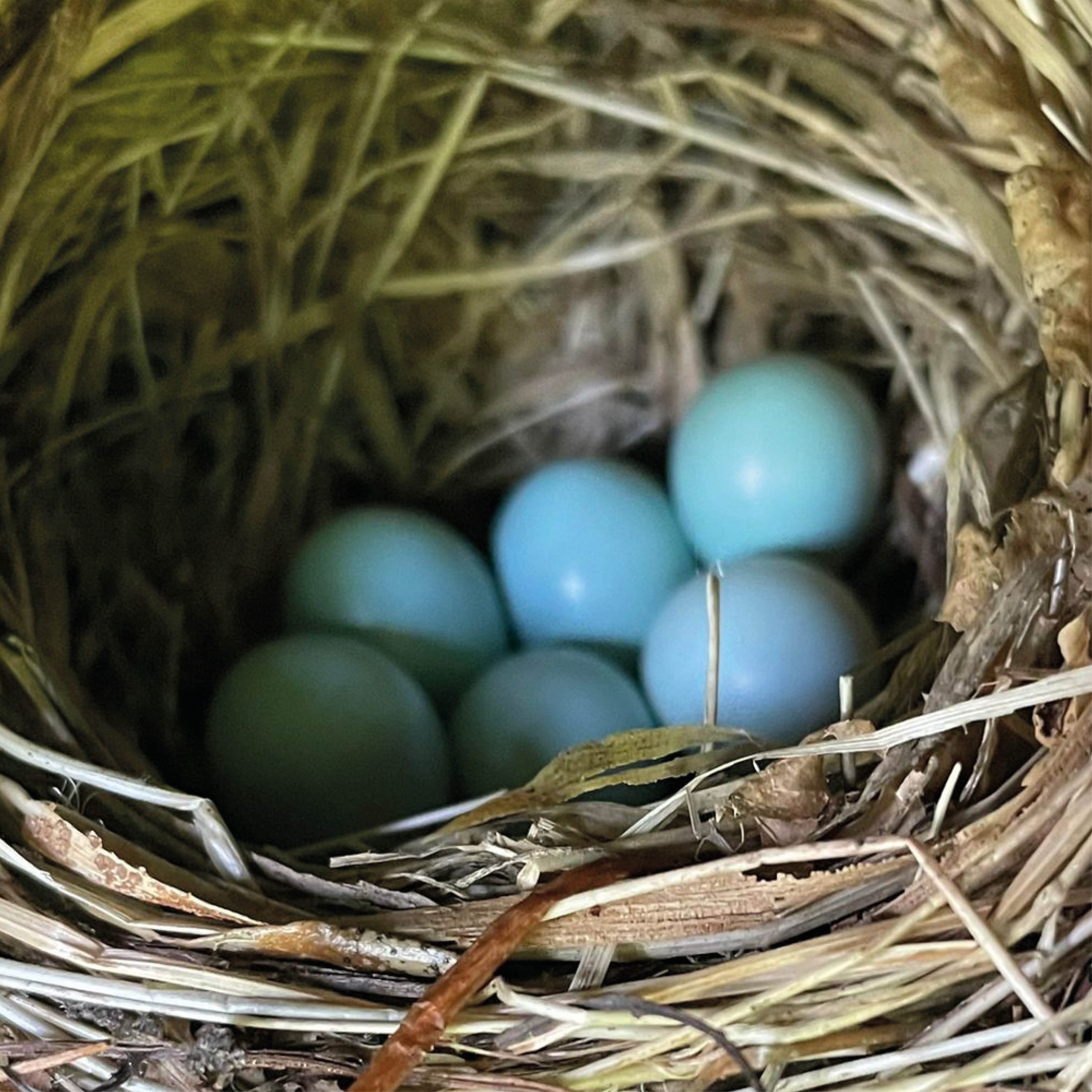Oyster mushrooms (Pleurotus ostreatus) are an easy species to identify in the wild. They have oyster-shaped silvery grey or greyish-brown caps and usually grow in layers on deciduous wood – on a tree that is dying or on dead wood.
We have a special tree deep in a beech wood that gives us oyster mushrooms every year, usually after a cold snap. When the mushrooms grow they appear in wonderful fluted abundance and we can never eat them all fresh.
In our woodland they begin to fruit after a cold snap in the autumn but we have known them to fruit as late as February. We wait until the mushrooms are at least two inches wide and take a sharp knife to the base. They have very little stem so you can’t pick them.
Oyster mushrooms do not like sealed containers and they do not like plastic bags. The plastic makes them go slimey, as does washing them. Brown paper bags make them dry out. If you need to wash them either use them immediately or pat them dry with kitchen paper. Best, clean them with a dry soft brush, the kind you get at the end of a mushroom knife. Tim used a small (1.5cm) artist’s brush but any small soft brush will do. Store them in the vegetable compartment of the fridge or a cold store in a lidded yet slightly open plastic box so that they can breathe. They will last for two weeks in good condition.
But what about drying oyster mushrooms? I have never seen dried oysters for sale but I was sure it is possible. They are too big and fleshy to be dried whole but they can be torn into strips. I found a useful blog on the subject, Montana Mushrooms by Dean:
“When you find a good oyster mushroom source, you often find more than you can eat right away. Oysters don’t store or keep very long after picking, so you are better off to store some for those cold winter months. My favorite way to keep mushrooms around is to dry them. After eating my fill of the harvest, and sharing some, I proceded to dry the excess. The process is simple and easy to do! First you clean the mushrooms. This batch was pretty clean since they came off of coffee grounds. I had to rinse them a little and dried them off on paper towels. The mushrooms were then torn along the gills to a mangeable size. This batch was dryed on racks on the counter for several days.”
“When drying large amounts of mushrooms or meaty mushrooms, we use a dehydrator. The main thing is to make sure they are completely dry before you jar them up. At this point they go into labeled mason jars for storage. When rehydrating mushrooms you can boil them a bit in water. Make sure you use or save the broth. This is where the flavor is! Rehydrating in milk works well, especially if you are going to flour and fry them or make gravy. I like to throw them in soups or sauces and let them rehydrate in the liquid of the dish. Mushroom soups made from dried mushrooms are excellent and in most cases, better than fresh mushroom soup. So pick when you can, eat all you can, and store the rest. You will be very happy you did on those months when the mushrooms are not flushing!”
We don’t have a dehydrator so instead we used the warmth from our woodburner.
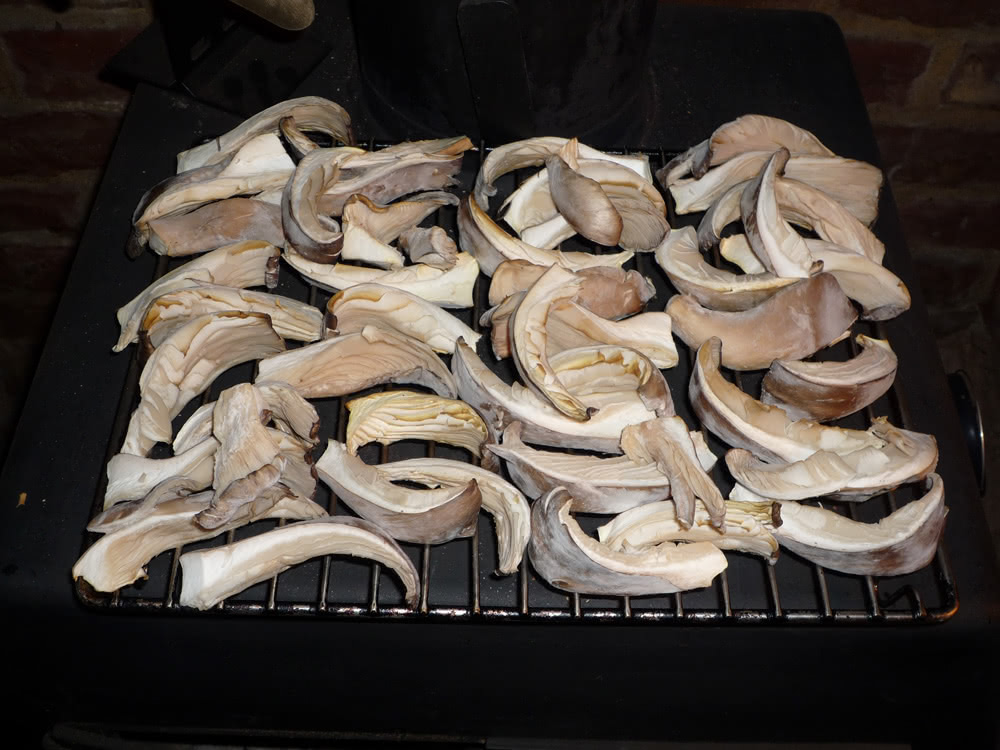
There are three main methods you can use:
1) Place them in a roasting tray on kitchen paper and place in a low oven
2) Place them in a roasting tray on kitchen paper and place in a warm airing cupboard
3) Place them on a roasting rack and place on top of a wood burning stove.
We tried all three methods and the easiest for us was the woodburing stove method. We left the mushrooms on the rack for two evenings and then transferred them to a glass jar with a lid. We left the jar without a lid for a further evening before sealing it, making sure the mushrooms were completely dry (so they do not rot). Don’t dry them for too long because they will crumble to powder.
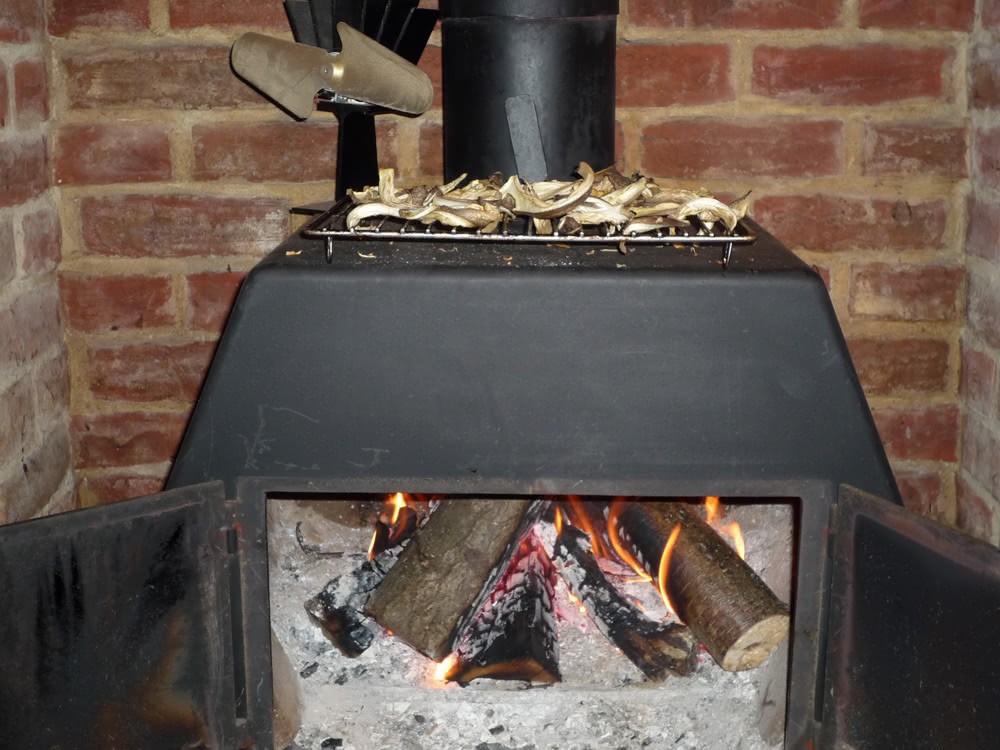
We tried the airing cupboard method but ours is not very hot. We have a highly insulated water cylinder and it doesn’t radiate heat. We therefore decided to transfer them to the woodburner to finish them off.
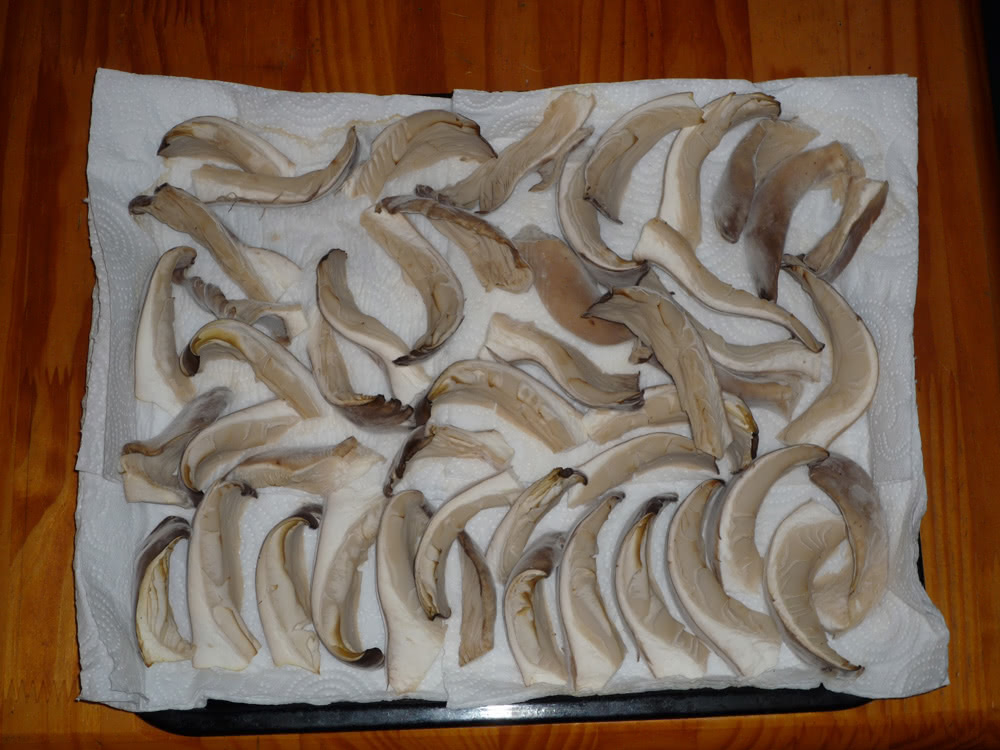
I admit we didn’t test the last method – in a very low oven on kitchen paper. It just seemed silly to waste the electricity when we had a woodburner heating the house anyway but we have dried mushrooms in the oven before. The main thing to note is that you do need to make sure you are drying small strips and the oven is on low.
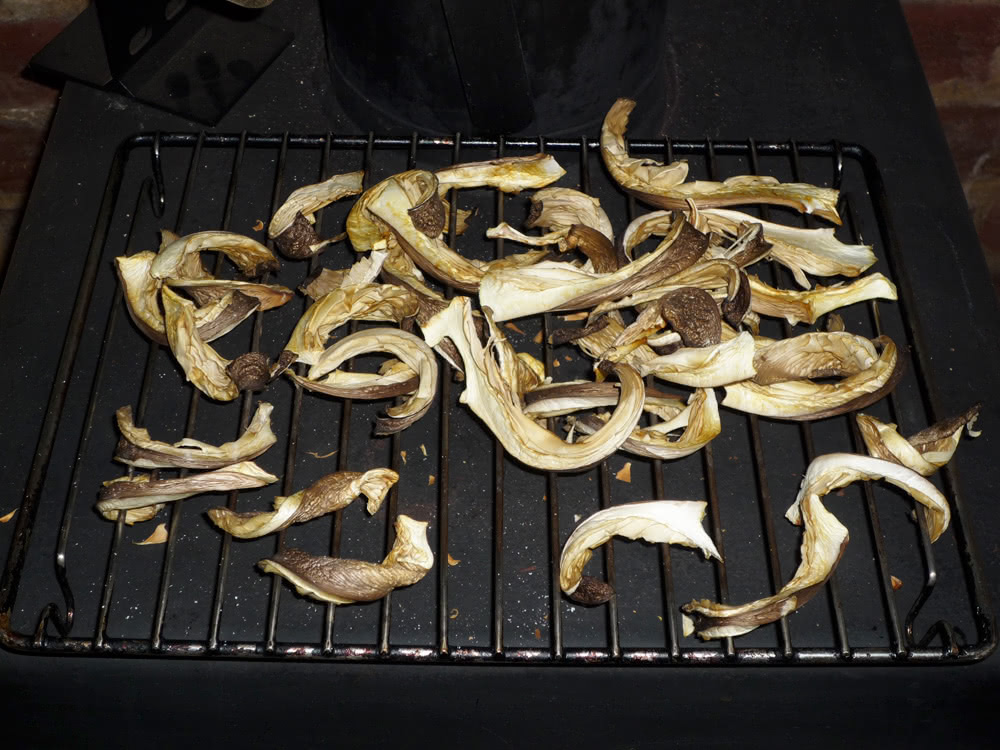
Oyster mushrooms are very fleshy and meaty and are delicious stir-fried. We also like to eat them in casseroles and stews. They add a fullness to any dish. To rehydrate them simply put them in a little hot water. Cover them only. Save the stock and use it in your dish.
Maddy Harland is the co-founder and editor of Permaculture magazine and author of Fertile Edges – Regenerating the land, culture and hope.


